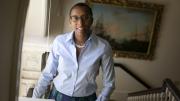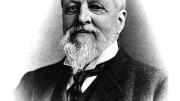When Dean Claudine Gay announced on November 2 that she had authorized 18 new faculty searches this academic year—bringing the total to an eye-popping 66—it was a tangible sign that the Faculty of Arts and Sciences (FAS) has weathered the coronavirus crisis, emerging in better shape than had been feared in the spring of 2020. Earlier that day, she went public with news of a different sort: that FAS had adopted a new model for analyzing its resources and expenses, taken the first step to address its large fixed and operating costs for facilities, and set in motion a sweeping academic strategic-planning effort. All were reminders that the faculty faces hard choices if it is to fulfill its current obligations and achieve its aspirations to invest in the exciting research that will shape its future work. Given the unforeseen strengths, human and financial, revealed during the pandemic, this feels like an important moment for FAS to rethink traditional practices and explore new ones to secure its traditional intellectual prowess as Harvard’s core faculty.
The Year that Was
In the fall of 2020, FAS projected a $100-million-plus loss for fiscal 2021, including a large cash deficit that could drain its reserves, limiting its ability to pursue enhanced research and teaching. Although the coronavirus is hardly history, Gay was able to present a remarkably different outcome in her annual report, released for the November 2 faculty meeting. Having engaged many colleagues in joint planning for remote instruction, a largely depopulated campus, and new research protocols during the 2020-2021 academic year, she and they were able to take a victory lap. FAS reported a $51.3-million operating surplus for fiscal 2021 (ended June 30)—reversing the red ink recorded the prior year, when the pandemic began, and generated cash totaling nearly $120 million, tripling the prior-year result. (Full details are available at harvardmag.com/fas-annual-report-21).
Clearly, faculty and staff members responded to Gay’s early 2020 call to restrain nonessential spending. Combined with a compensation freeze for nonunion employees, retirements encouraged by a University incentive program, controls on staff hiring and much-reduced faculty recruiting, the economies directly related to the pandemic (no travel or events, reduced building operation and utility costs, and sharp cuts in capital spending) had their effect. On the revenue side, donor contributions (particularly current-use giving), sponsored-research support, and Division of Continuing Education online enrollments all exceeded expectations.
Significant one-time items bolstered the bottom line, too: suspension of a University academic assessment ($13 million in fiscal 2020), and $40 million in “special resources support…received to help defray costs associated with the pandemic.” This likely reflects in part FAS’s share of $20 million distributed by the office of the president and provost to deans to cover direct pandemic costs (testing, tracing, personal protective equipment); the rest requires further explanation.
In the current year, many of the unique circumstances during fiscal 2021 (including those one-time items) should reverse. Following the $89-million decline in degree-program tuition, room, and board fees then, this year the larger-than-usual student cohort—after pandemic-year leaves and deferred admissions—will presumably pay their term bills. Building and occupancy, dining, and other costs will rise accordingly. Financial-aid spending, reduced by $36 million last year, should increase. And $23 million of pandemic costs (testing, tracing, building infrastructure, and technology) ought to tail off. In other words, not quite back to normal, but at least a new-normal year.
Reinforcing these brighter prospects was the hope for larger future endowment distributions—the source of 54 percent of FAS’s revenues—after Harvard’s strong investment returns (see page 13). Gay clearly felt confident enough to loosen the reins a bit. She announced $5 million of spending to equip offices for hybrid operation and upgrade classroom technology, and authorized the extra searches (perhaps faculty members’ dearest wish).
In time, one welcome result of the latter should be restoring the size of the professoriate. As the faculty-affairs section of the annual report reveals, curtailed searches and constraints on hiring imposed in early 2020 and maintained in some form throughout the ensuing academic year resulted in a reduction of the FAS ladder-faculty census from 728 to 711 after retirements and other departures. Data provided separately show that given decreases in arts and humanities (from 195 to 188 ladder faculty) and social science faculty (238 to 232), FAS’s gradual shift toward science (down from 207 to 202) and engineering and applied sciences disciplines (up by one, to 89) continues.
Nina Zipser, dean for faculty affairs and planning, estimated that after anticipated attrition, the expanded searches ought to yield a ladder-faculty cohort of 720 within a couple of years. Both her presentation November 2 and annual-report comments reinforced the message expounded last year: that FAS’s tenure-track faculty searches continue to attract a pool of applicants less diverse than the cohort of recent doctoral recipients. She detailed numerous steps the faculty need to take to improve upon this record—something she and Gay are obviously emphasizing as searches accelerate.
Zipser also presented information about faculty members’ service obligations (like committee work), and evidence that it falls disproportionately on women and underrepresented minorities—with possibly adverse consequences for their research (and for Harvard’s attractiveness to prospective recruits). Faculty members participating in the meeting devoted many questions to this subject, and to Zipser’s comments on the accommodations FAS is making to accommodate tenure-track professors whose research was disrupted by the pandemic, lest their career-development suffer. (For a report on FAS’s review of its tenure process, released separately, see harvardmag.com/transparent-tenure-21.)
Envisioning the Future
Neither the annual report nor the faculty meeting dealt much with an effort that could have far greater implications for FAS. Having melded the ideas of some 125 faculty and staff members in formulating plans for the pandemic in the spring of 2020, Gay took two further steps. First, she asked Olshan professor of economics John Y. Campbell to model FAS’s economics (operating revenues and expenses, and likely endowment income and facilities costs) in the longest-term perspective. He found that in light of faculty growth, facilities expansion, and financial-aid enhancements brought on line just before the Great Recession, and House renewal costs assumed since, FAS likely runs a modest structural deficit in perpetuity. But if long-term endowment returns decline modestly (after the recent heroics), or if inflation pushes up wages, those deficits expand enormously. Either way, FAS’s investment in faculty growth and compelling research opportunities is choked off—and even routine operations are stressed severely during such crises as the endowment losses in 2009 or the early stages of the pandemic.
In response, Gay assembled an FAS Study Group (FSG) in November 2020, initially to explore how to cope with these financial challenges. As it dove into its analyses, the FSG evolved into something much broader: an examination of how the faculty operates departments and research centers; uses restricted endowments; hires young scholars; assesses professors’ workload and assures that they remain productive (or are encouraged to retire); admits graduate students; allots its nearly half-billion-dollar annual outlay on facilities; and, generally, makes strategic academic choices and then assures that it can act on them. (Read an extensive report at harvardmag.com/fas-plans-21.)
Building on the collaborative model that informed the pandemic planning, Gay has now acted on the FSG report. In October briefings for the faculty, she announced that she has adopted the new technique of modeling FAS’s economics and resource allocation, and begun implementing recommendations concerning restricted endowment resources and revealing the costs of office and lab space (a first step toward incentives to economize). She then invited the entire faculty to meet in small groups with her and the divisional deans this academic year, to elaborate a common academic vision and identify prospective changes in faculty recruiting and careers; structure (departments and centers); and graduate education.
Obviously, large changes in FAS culture are at stake. Hence this unprecedented outreach to the entire faculty—offering the chance to have a direct say in shaping its future, amid greater transparency about FAS’s operations—harnessed to the promise to act at warp speed, at least for the academy. Gay envisions pilot-testing and assessment of reforms in the 2022-2023 academic year; an all-faculty retreat to review FAS’s directions in June 2023; and broad implementation of the changes in 2023-2024. The aim is to establish:
• speedier decision-making;
• the ability to embrace new areas of research and welcome the scholars best equipped to push them forward: and
• a clear sense of where to allocate available funds for research and teaching, and how to organize FAS to do so: becoming intentional about its academic direction, rather than reactive or atomistic.
At the faculty meeting, without elaborating in detail the work on which FAS is now engaged, Gay repeated her invitation for all to participate in the strategic planning as “founders” of the “new FAS” as Harvard approaches its four-hundredth anniversary in 2036. Acknowledging that it may be difficult to turn to that kind of expansive engagement after nearly two years of confined contact and limited in-person work, Gay assured colleagues that the planning and implementation would unfold over three years. “We want to take our time” to determine the FAS’s future, she said—“but not 400 years.”









